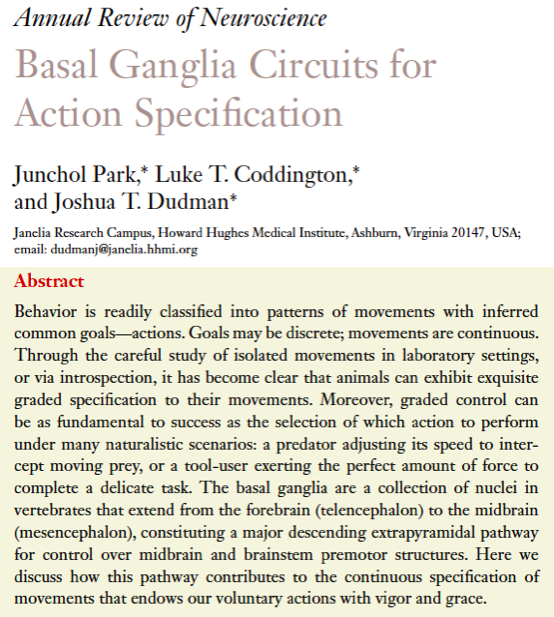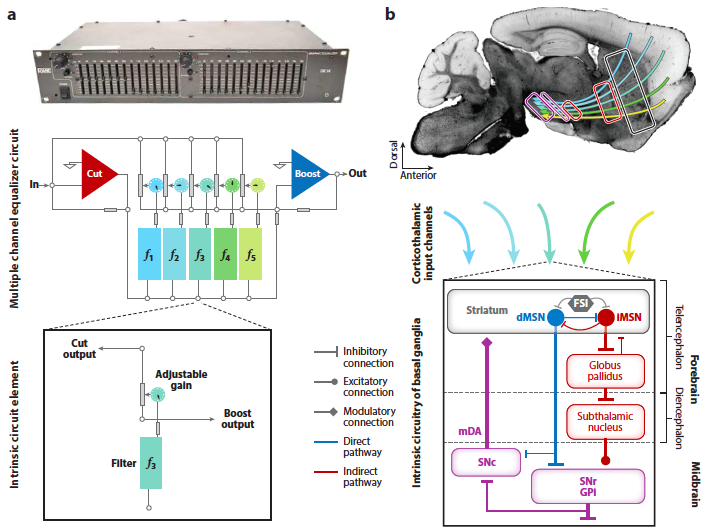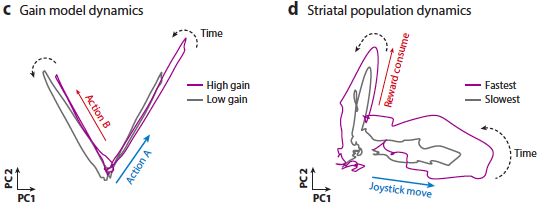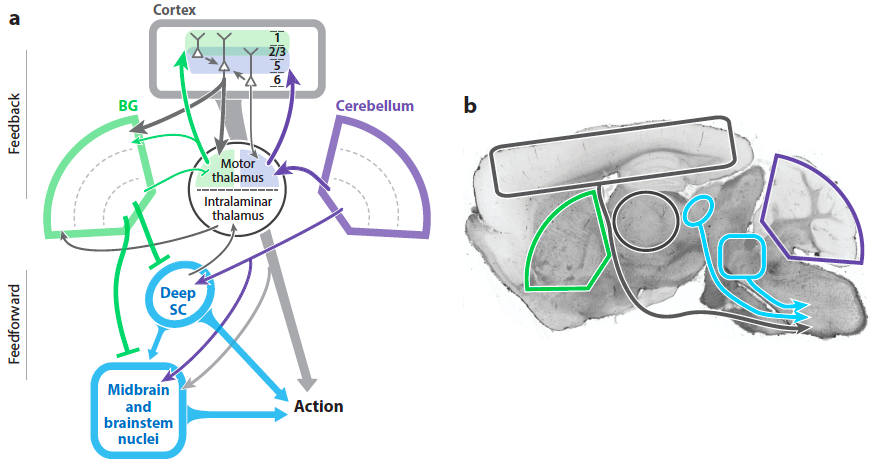1/ New review from Junchol Park, @jtdudman, and me, on the growing appreciation for an “action specification” theory of Basal Ganglia (BG) function. The BG represent and influence not only WHAT to do, but HOW to do it! http://www.annualreviews.org/eprint/NGSYQJCEBYEIWGHFSKNA/full/10.1146/annurev-neuro-070918-050452">https://www.annualreviews.org/eprint/NG...
2/ An analogy for BG action specification is a graphic equalizer. A song chosen elsewhere is split into channels. Gain is applied to each to sculpt the signal that is sent to speakers. Small changes perfect the chosen song; large ones can make it seem like a new song was chosen
3/ Thus one should expect movement-specific representations in the BG that reflect continuous aspects of how the movement is being performed. For instance, as in striatal representations of the speed of concurrent licking and forearm movements in a mouse.
4/ So for an action like running, some (but not all) striatal activity should represent an animal& #39;s speed. @jtdudman and @blamlab have previously argued that “control of vigor” is a useful description for how BG continuously specifies action
https://dudmanlab.org/papers2/DudmanKrakauer2016.pdf">https://dudmanlab.org/papers2/D...
https://dudmanlab.org/papers2/DudmanKrakauer2016.pdf">https://dudmanlab.org/papers2/D...
5/ How do BG circuit mechanisms support specification? We review how local inhibition in the BG can sculpt activity, rather than only turning it off. Likewise, BG output to thalamus and superior colliculus can modulate, rather than gate, activity. Like sliding equalizer dials!
6/ We used all the arrows to illustrate where all this continuous modulation fits into larger networks for action control, with rodent brain as an example. Feedforward control of midbrain/brainstem is a larger, more direct influence than the oft-studied feedback loop to cortex
7/ Interesting parallels in BG and cerebellum: both have input and internal layers, and output layers that project to many of the same places, with very different results. In motor thalamus for instance, BG influence is subtle relative to strong driving inputs from cerebellum
8/ Many more examples in the paper of using “action specification” as a framework for explaining neural activity in the Basal Ganglia, and how it represents and modulates behavior. Very rewarding to produce this with Junchol and Josh for @AnnualReviews, hope it is useful!

 Read on Twitter
Read on Twitter





